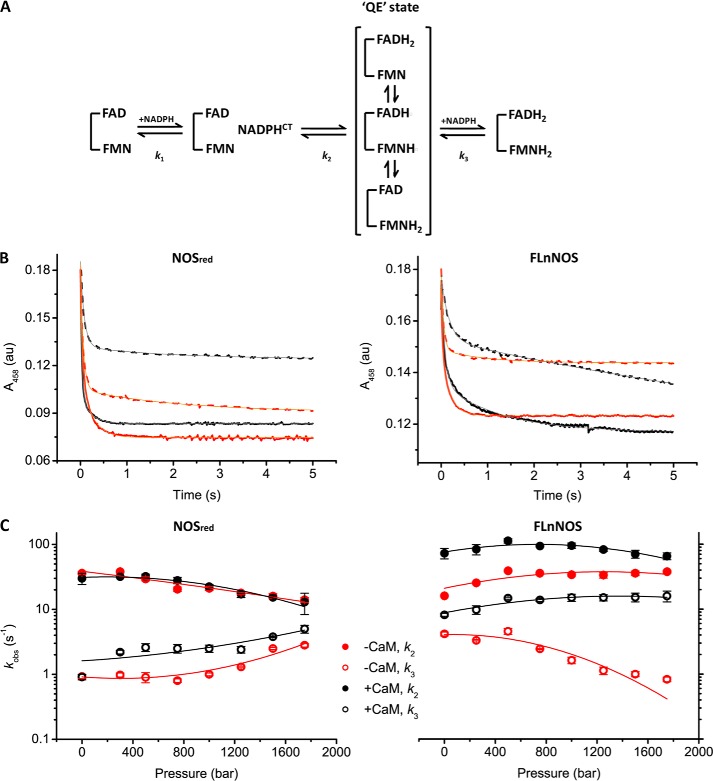FIGURE 6.
The hydrostatic pressure dependence of flavin reduction in nNOS. A, simplified scheme of the reductive half-reaction of nNOS. Reduction of nNOS by NADPH consists of at least three phases relevant for catalysis, with each intermediate comprising a number of different enzyme species. The first phase predominantly represents the rapid formation of the NADPH-enzyme charge transfer (CT) complex (k1 >500 s−1). The second phase (k2) predominantly represents the formation of the two-electron reduced species, or quasi-equilibrium (QE) state, and the third phase (k3) predominantly represents further reduction to the four-electron reduced species (27, 44). B, typical transients obtained at 458 nm upon reduction of nNOSred (left panel) and full-length nNOS (right panel) in the presence (black) or absence (red) of CaM at low (1 bar, solid lines) and high pressure (1500 bar, dashed lines). Because the first phase is not observed in this study due to dead-time limitations of the high pressure stopped-flow instrument, transients were fitted to a two-exponential equation (thin gray and orange lines for CaM+ and CaM−, respectively). C, the hydrostatic pressure dependence of flavin reduction kinetics in nNOSred (left panel), and full-length nNOS (right panel) measured at 25 °C in the presence or absence of CaM. The error bars represent the S.D. calculated from at least three individual transients. Solid lines represent fits to Equation 2 and the ΔV‡ and Δβ‡ values are given in Table 2.

